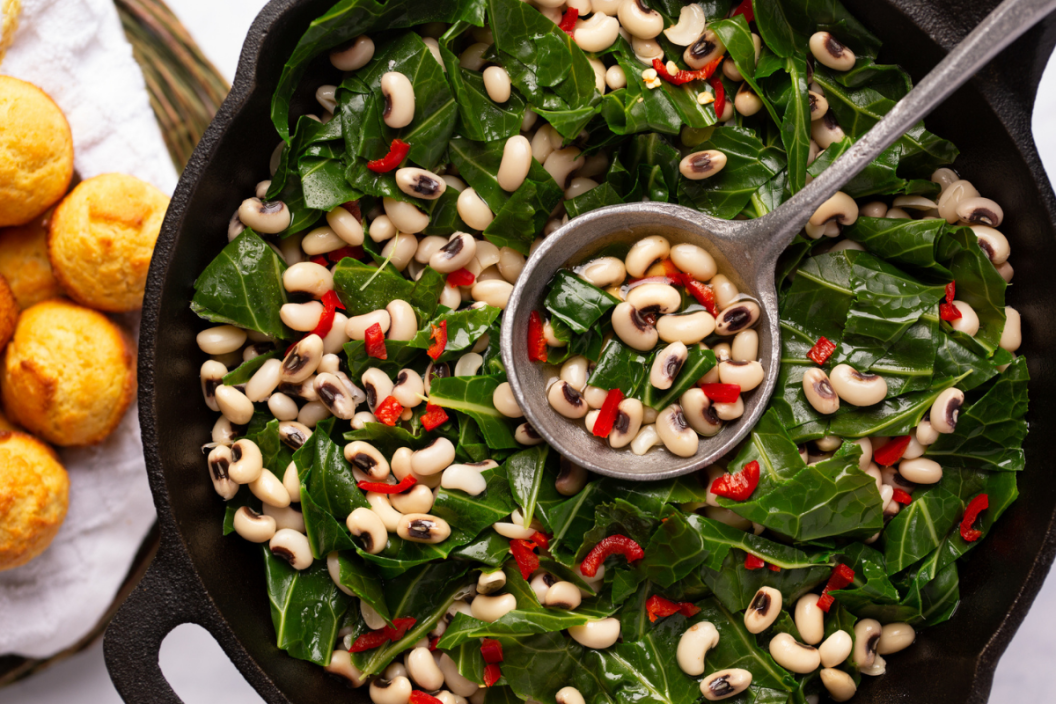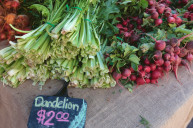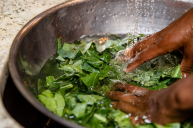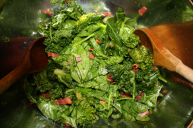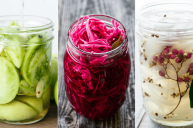Collard greens are a staple of Southern cuisine, often filling the role of the sidekick to dishes like cornbread, mac n cheese and ham. However, when cooked right, this leafy green vegetable can be the star of the show. What are collard greens and how do you cook them to deliciousness?
Videos by Wide Open Country
This tasty green veggie is so popular in the south that it's the official state vegetable of South Carolina. Walk into any diner throughout Mississippi, Georgia or Louisiana and you're sure to find this superfood on the menu. However, these greens are as polarizing as they are popular. Many a veggie lover and southerner hates collard greens for their overly bitter flavor and slimy texture.
What Are Collard Greens?
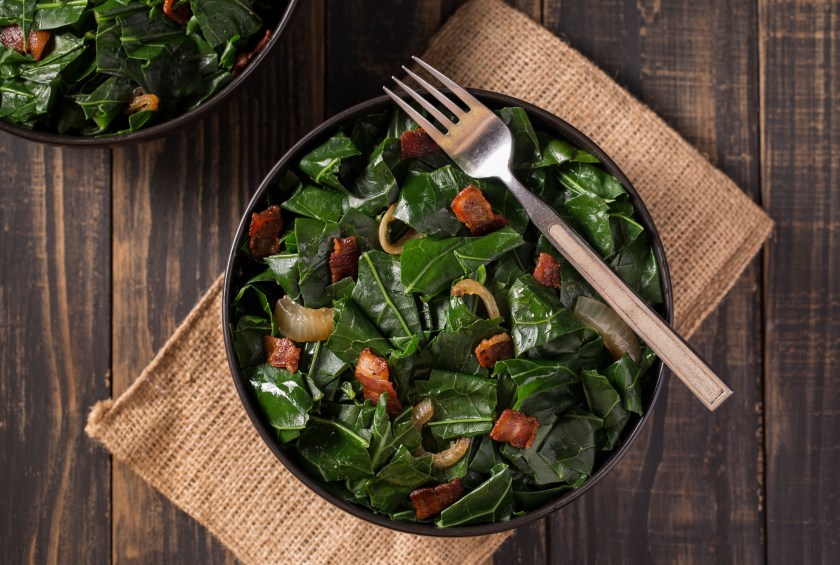
Getty Images/mphillips007
Collard greens are part of the cabbage family, Brassica oleracea, which you can tell because they smell similar to cabbage when cooking. This tasty veggie is also related to kale and mustard greens. Collard greens have large dark green leaves and tough stems, which must be removed before cooking. Find them at your local farmer's market or grocery store.
This popular side dish is beloved for its hardiness and versatility, perfect for soups, braises, salads, wraps, or on its own. Collard greens are often associated with New Year's Day, and it's said that they'll bring luck for the year to come, along with black-eyed peas, pork and cornbread. Although these greens are full of flavor on their own account, they're often cooked with smoked or salted meat like bacon or ham hocks, along with onions, vinegar, salt and pepper.
What Do Collard Greens Taste Like?
As tasty as they are when cooked, raw collard greens are bitter. While not as bitter as kale, they do pack quite a punch of bitter flavor, which is why it's important to cook them well. Using heat on the greens makes their flavor mellower and brings out an earthy taste. For the best collard greens, buy them in the colder months.
Health Benefits of Collard Greens
Like many greens, collard greens are packed full of amazing health benefits that make it more than worth it to give them a try. They have amounts of calcium, folate, fiber, magnesium, potassium, vitamin A, vitamin K, vitamin B2, vitamin B6, and vitamin C.
This yummy veggie is good for bone and blood health, along with boosting the immune system and aiding digestive health. With so many vitamins, minerals and antioxidants, it's hard to deny that collard greens are the perfect addition to your plate. However, it's important to keep in mind how you cook them. If combined with lots of butter, salt and ham, a side of collard greens does more bad than good. for your health.
How to Prepare Collard Greens
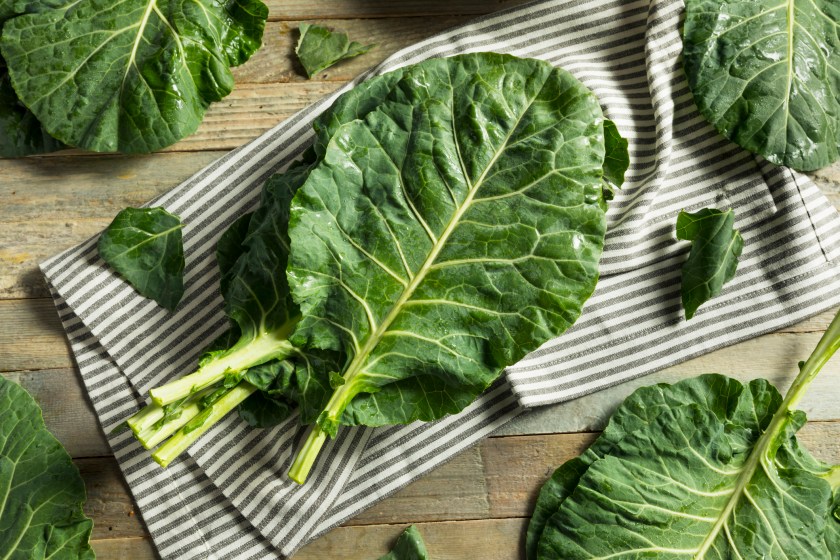
Getty Images/bhofack2
One of the most essential steps to making greens is to clean them before you get cooking. Fresh collard greens are often full of dirt, so thorough washing is vital to enjoying them in a tasty meal. Although you can simply use cold water, it's most effective if you add in some distilled vinegar and salt.
Fill a large bowl with water, 1/2 cup distilled white vinegar and 3 tablespoons salt. Stir the mixture around a few times, and then add in your greens. Scrub them with your hands, removing any dirt and grit particles, and swish them around before scrubbing some more.
To be extra careful about removing dirt and bugs, let them soak for about 20 minutes in the solution, and then scrub again. Then, to remove the vinegar, either soak the greens in water a few times or rinse them well under cold water. You'll want to make sure all dirt and bugs are gone before putting them in the pot!
Once your greens are washed, remove the tough center stem by slicing alongside it with your knife, removing the stem from each piece. You can also just pull the leaves off the stalk with your hands. Once the stem is removed, stack the leaves and cut into thick ribbons.
How to Cook Collard Greens
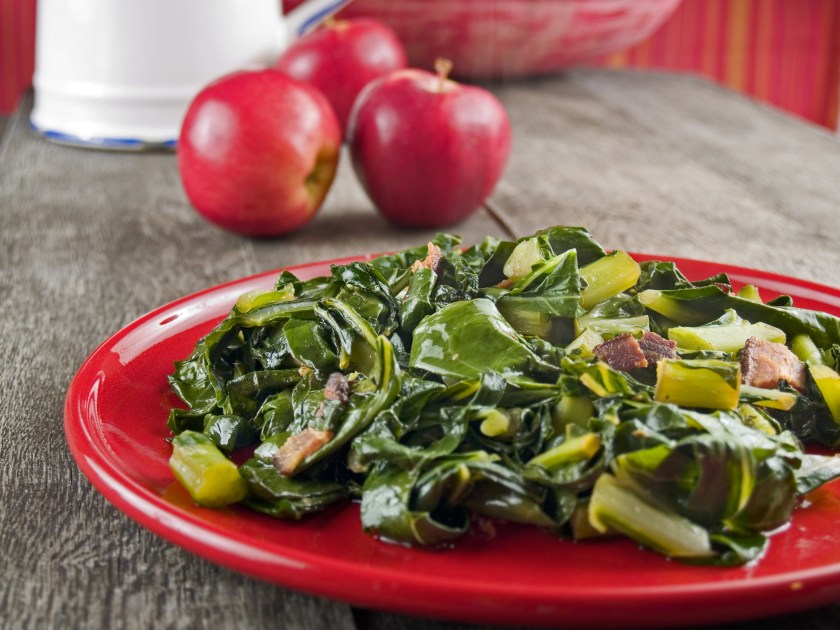
Getty Images/MonaMakela
It's important to cook collard greens well to get rid of their bitterness, transforming them into the flavorful, delectable greens that you'll find on any southern dinner table. While raw collard greens are edible, they'll be more bitter and tougher than most people prefer. Although there are many ways to cook collard greens, the best way is to saute them or simmer in water.
For the healthiest method, simply steam your greens for five minutes or so, and flavor them however you like. Although this works just fine, cooking them the traditional southern method will result in the most flavor.
To cook collard greens, heat olive oil, smoked ham hock or bacon fat in a large pot. Add in onions, garlic and red pepper flakes. When tender, put in chicken broth and a meat like a smoked turkey leg. Although you can use water for this step, broth adds the most flavor to the meal. Bring the mixture to a boil and then put in the greens.
Let the greens simmer for however long you like. Some prefer to simmer them for 2 hours until nice and tender, while others take them out around 45 minutes to maintain some firmness. When they've reached the perfect texture, season them however you like, using seasonings like white vinegar, salt, pepper, garlic salt, or more red pepper flakes.
To try for yourself, here's a classic Collard Greens Recipe with bacon. For more inspiration, here are 10 delectable ways to enjoy collard greens at Kitchn.
Substitutes for Collard Greens
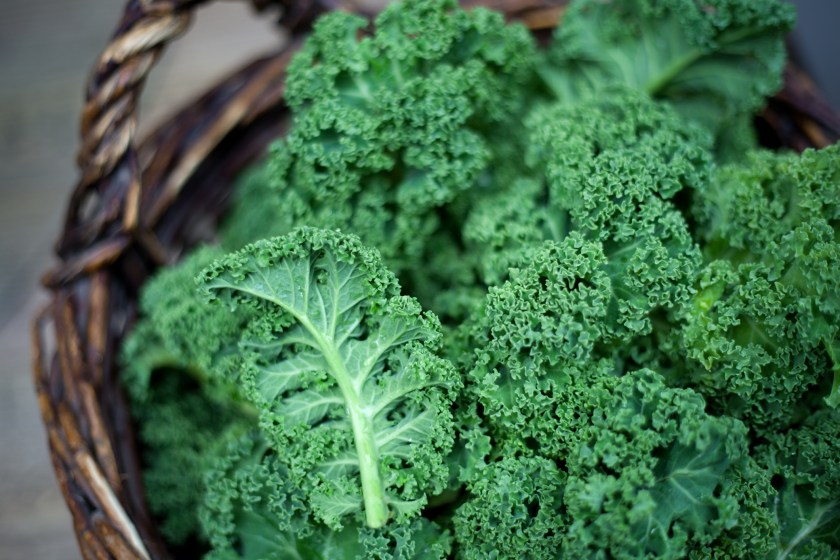
Getty Images/alice dias didszoleit
If these healthy greens sound great to you but you don't have them on hand, there are a few substitutes that are comparable in flavor and use. Since kale also comes from the cabbage family, it's similar to collard greens and is a great alternative. It has similar flavor and texture and can be used in any recipe that features collard greens, from salad to sandwiches to soups.
You can also use spinach, turnip greens, mustard greens, or Swiss chard. Although none of these substitutes will impart the exact same earthy flavor of collard greens, they're tasty stand-ins that will make for a healthy, delicious meal.
